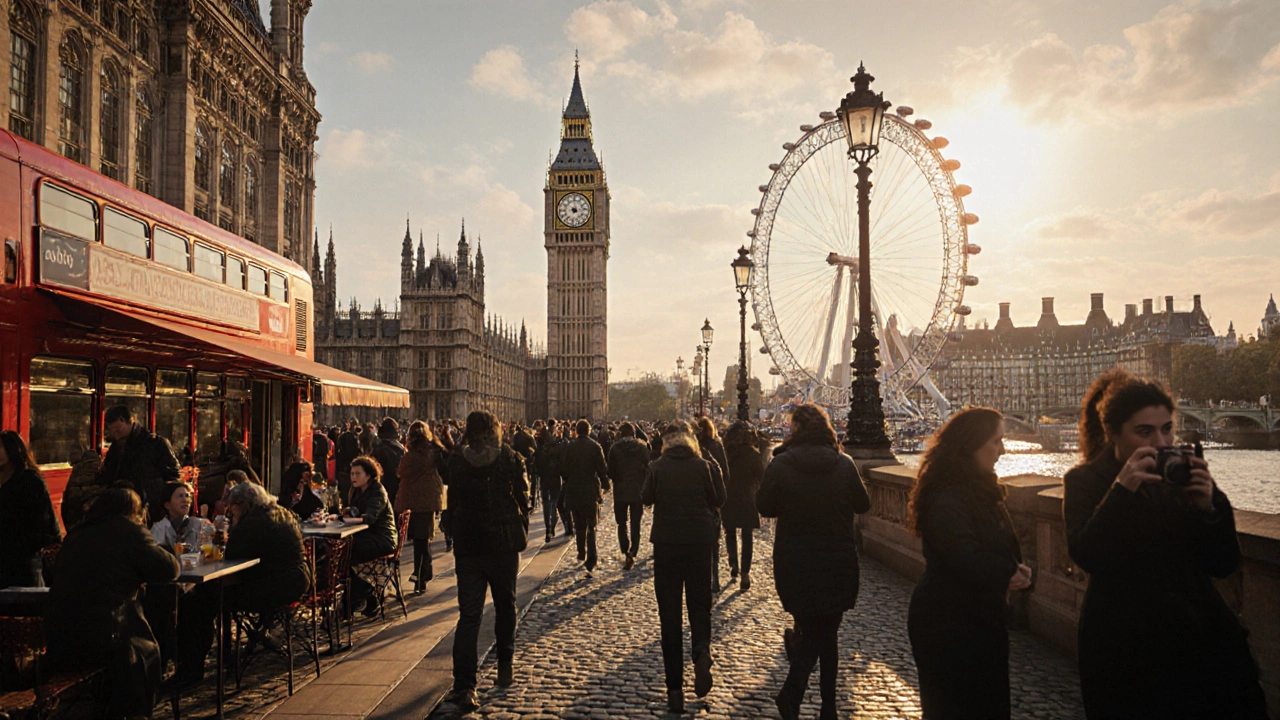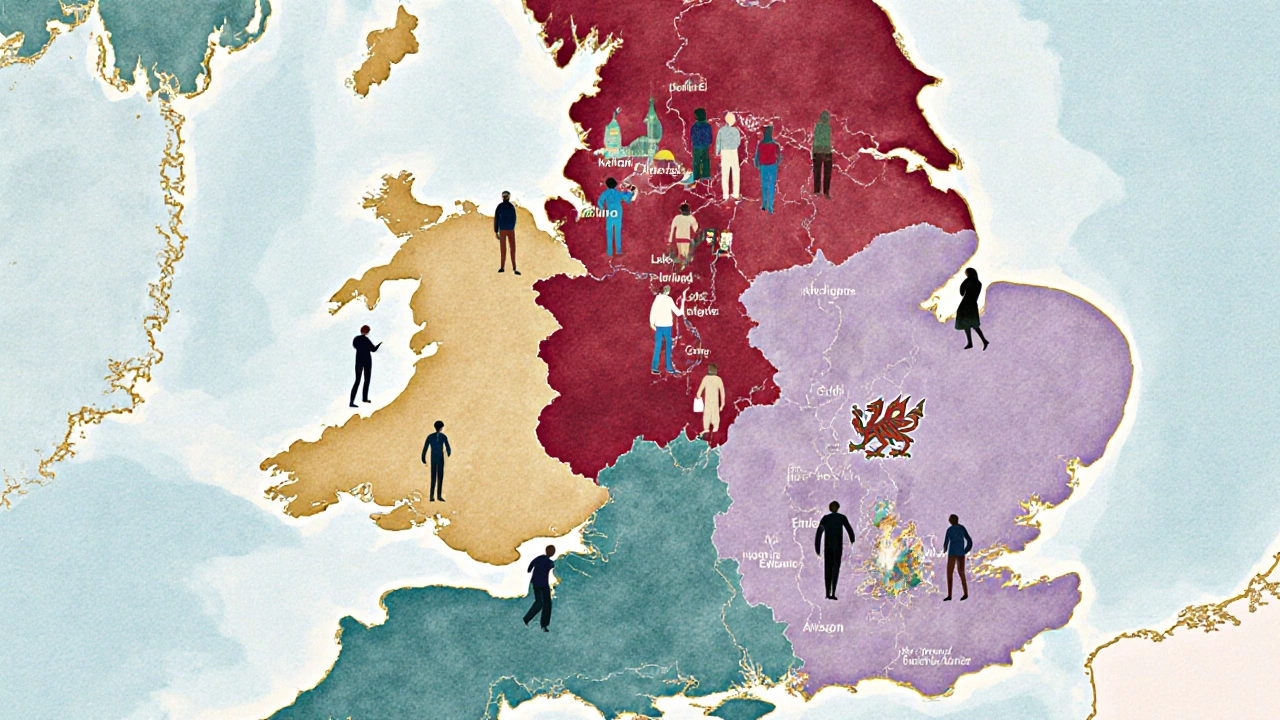When people ask about tourism in the British Isles, United Kingdom is a sovereign country made up of England, Scotland, Wales and Northern Ireland. It draws more than 40 million overseas visitors each year, but the numbers aren’t evenly spread across the four nations. If you’re planning a trip or just curious which part of the UK gets the most footprints, this guide breaks down the data, highlights the biggest draws, and points out hidden gems you might have missed.
Why Visitor Numbers Matter
Understanding where tourists concentrate helps you decide where to book a stay, how to budget, and which local experiences are worth the travel time. High‑traffic areas often have better transport links, a wider range of accommodation, and more attractions, but they can also mean crowds and higher prices. Conversely, regions with fewer visitors can offer authentic local culture and lower costs.
Overall Visitor Breakdown by Nation
According to the UK Office for National Statistics (ONS) 2024 report, the proportion of international arrivals by nation looks like this:
| Nation | Arrivals (millions) | Share of Total |
|---|---|---|
| England | 27.3 | 68% |
| Scotland | 6.7 | 17% |
| Wales | 4.1 | 10% |
| Northern Ireland | 2.2 | 5% |
England clearly dominates, largely because it houses the capital city, London, which alone accounts for roughly half of all overseas arrivals.
London - The Magnet
London is the capital city of England and the United Kingdom. In 2024, it welcomed about 21 million international visitors, making it the most visited city in Europe. Iconic sites such as the British Museum, the Tower of London, and the West End theatre district each pull in millions of tourists annually. The city’s extensive airport network (Heathrow, Gatwick, Stansted) and public transport system keep it easily accessible from anywhere in the world.
If you’re looking for quick sightseeing, a London‑based itinerary can cover a week’s worth of top attractions and still leave time for day trips to nearby sites like Windsor Castle or Brighton.
Scotland’s Crown Jewels: Edinburgh and the Highlands
Edinburgh is Scotland’s capital and a UNESCO World Heritage Site draws roughly 4 million overseas visitors each year. The city’s fame skyrockets every August during the Edinburgh Festival Fringe, the world’s largest arts festival, which adds another 1.5 million cultural tourists.
Beyond the capital, the Scottish Highlands attract nature lovers with dramatic landscapes, lochs, and wildlife. The Isle of Skye alone recorded 2.2 million visits in 2024, many of which were domestic tourists, but the region also pulls a steady stream of international adventure travelers.

Wales: Coastal Charms and Mountain Trails
Cornwall is a coastal county in the southwest of England, often grouped with Wales for its seaside appeal receives about 6 million visitors annually, yet only a fraction are from abroad. The Welsh coastline-particularly the Pembrokeshire Coast National Park-offers rugged cliffs, sandy beaches, and historic castles, accounting for roughly 2 million overseas arrivals.
In the north, Snowdonia National Park is a magnet for hikers and cyclists, contributing heavily to Wales’ international tourism profile despite its relatively modest numbers compared to England and Scotland.
Northern Ireland: History and Natural Wonders
Giant’s Causeway is a UNESCO‑listed basalt column formation on the north coast of Northern Ireland draws about 1.5 million tourists each year, half of whom are overseas visitors. The city of Belfast, with its Titanic Belfast museum and growing culinary scene, attracted roughly 1.2 million international guests in 2024.
While Northern Ireland’s numbers are the smallest among the UK nations, the region’s uniqueness and quieter atmosphere make it a rewarding add‑on for travelers seeking something off the beaten path.
What the Numbers Mean for Travelers
- Plan around peak seasons. London’s visitor count spikes in summer and during major events like the Notting Hill Carnival. Booking early can save money.
- Consider regional rail or budget airlines if you want to explore beyond England. Trains from London to Edinburgh take around 4.5 hours, while flights to the Highlands can be under an hour.
- Balance famous attractions with lesser‑known spots. For example, combine a day in London with a weekend in the Cotswolds for a peaceful countryside experience.
- Budget wisely: England’s average daily tourist spend in 2024 was £145, while Scotland’s was £121, reflecting differing price levels.

Top 5 Most‑Visited UK Destinations - Quick Reference
- London, England - 21 million international arrivals
- Edinburgh, Scotland - 4 million international arrivals
- Lake District, England - 3.4 million international arrivals
- Yorkshire, England - 3 million international arrivals
- Cornwall (including adjacent Welsh coast) - 2 million international arrivals
These figures help you pinpoint where the most visited UK spots are and decide if you want to join the crowds or find quieter alternatives.
How to Use This Guide
Pick a primary destination based on your interests-culture, nature, or history-and then look at the surrounding regions for day‑trips. For example, a visitor to London can spend a day exploring Oxford or the historic city of Bath, both of which see fewer international tourists but offer rich experiences.
Remember that visitor numbers are a guide, not a rule. Even in the busiest cities, neighborhoods like Shoreditch (London) or Leith (Edinburgh) retain a local feel that many travelers love.
Frequently Asked Questions
Which UK region has the highest number of overseas visitors?
England, driven primarily by London, accounts for about 68% of all international arrivals to the United Kingdom.
Is it worth visiting Scotland if I’m only in the UK for a short trip?
Absolutely. Edinburgh’s compact city centre can be explored in two days, and the Highlands are reachable via a short train ride or a day‑tour from the capital.
How do visitor numbers affect accommodation prices?
High‑traffic areas like central London see average nightly rates 30‑40% higher than less‑visited regions such as the Yorkshire Dales, especially during peak season.
Can I avoid crowds in the most visited places?
Visit early mornings, weekdays, or during shoulder seasons (April‑May, September‑October). Many attractions also offer timed entry tickets to spread visitors throughout the day.
What transport options are best for getting around the UK?
A combination of rail (e.g., the BritRail pass), low‑cost airlines (like Ryanair or EasyJet), and regional buses provides flexible and affordable travel across England, Scotland, Wales, and Northern Ireland.





